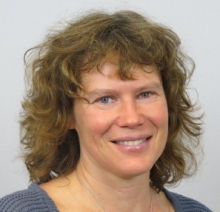Issue:
The recent contract award for the upgrading of Lausanne’s sewage plant to install micropollutant removal represents the latest significant step in Switzerland’s action on this issue, and will provide winning technology supplier Suez with an important reference project. Keith Hayward spoke with Ana Giros, CEO of Suez International’s Europe Latin-America Business Unit, about the company’s progress and prospects with micropollutants.

The start of 2016 saw Switzerland’s law requiring around 100 of its sewage treatment plants to be upgraded for the removal of micropollutants come into force. Already there is significant news on progress to report, with the award to Suez of the contract for improvements to the plant serving Lausanne.
‘It will be a wonderful showcase,’ comments Ana Giros, CEO of the company’s Europe Latin-America Business Unit. This is partly because it will further demonstrate the company’s technical capabilities, but also from an ecosystem perspective it will contribute to limiting the impact of micropollutants on Lake Geneva (Lac Léman), she says.
The contract builds in particular on the earlier micropollutant successes of the company’s Ozonia brand with the Sofia Antipolis plant built in France in 2012 and Switzerland’s first main plant, the Neugut plant in Dübendorf, Zurich, commissioned in 2014. These form just part of much wider activity on micropollutants by Suez focused to a large extent on these two countries.
Giros views the company’s experience built up in France as following two lines – research and full-scale activity. ‘Since 2001, we have launched more than 20 research programmes in the micropollutant field,’ she says. These have covered a range of aspects including, for example, the potential for treating contaminants at source at the outflows of hospitals. Meanwhile, the Sofia Antipolis plant has provided experience of applying this research at a sewage treatment plant that is sited just upstream of the water supply for the city of Antibes. ‘We have the innovation and research programmes, and in parallel we’ve been really doing it physically at the larger scale in a critical plant that is Antibes,’ she adds.
This activity paved the way for the early successes in Switzerland with the Neugut plant near Zurich, an important test site for the country in advance of its new legislation coming into effect this year, and the deployment of a pilot installation at the Lausanne sewage treatment plant as a precursor to the full contract.
Variable options
‘It is a significant market,’ notes Giros with regard to Switzerland, adding: ‘What is very interesting is that basically we have been working on several technical solutions. In the Zurich plant we have implemented solutions based on ozone. Now the second big one is Lausanne, and it is a mixed solution between ozone and active carbon filters.’
This reflects the important need in the micropollutant market to respond to the requirements of each location. Giros say the company has a range of options, or ‘bricks’, at its disposal, ranging from pure ozone to sand filters, right through to reverse osmosis. ‘Basically what we are doing is optimising tailor-made solutions for the different customers based on these basic bricks that we have developed,’ she says.
This responds to the removal requirements, such as the 80% reduction in micropollutants required by Swiss legislation, and constraints such as operating costs in areas such as chemical and energy requirements, and variables such as the water quality and industries in the catchment. ‘We have those basic bricks and for each given case we complement them to have better operating costs, and to reduce the quantity of pollutants that the customer wants as an ultimate target,’ adds Giros.
Sewage treatment as part of a wider approach
The cost aspect is an important one, because of course the prospects for further action in, for example, Europe depend upon the cost implications. ‘At the end of the day, what we are trying to do is promote what we have been researching, the cost of each solution, and combinations of solutions that can be pragmatic to create the right balance between how far legislation can be implemented and how much it would cost,’ comments Giros.
She is aware too that decisions about providing treatment at point source wastewater treatment plants have to form part of a much broader picture. There are vast numbers of chemicals already in circulation, and products continue to evolve as society becomes more sophisticated, notes Giros. It is important to consider the cost burden on industrial sources of chemicals, and it is also up to society to weigh up concerns around, for example, the impacts of substances such as paracetamol at concentrations equivalent to one tablet diluted in ten Olympic swimming pools alongside the many challenges of global sustainability, she continues. ‘We are trying to bring answers to the questions. Afterwards it is a global consensus between industry, public entities, and industrial people like Suez,’ says Giros.
Giros says that the aim of Suez is to position itself as helping the whole water cycle. ‘We are working both with industries to see how we can help them to have less outflows of micropollutants, and we are working with municipalities to see how new regulations will be implemented, knowing that it is an evolving target,’ she adds. It means working with regulators, to help them consider options. It also means working with agriculture, and Giros highlights the way that issues such as micropollutants cannot be dealt with in isolation by mentioning the sewage plant construction by Suez in Milan, where the outflows provide most of the water for irrigation around the city.
Suez will continue its efforts to raise awareness around micropollutants, says Giros. In the meantime, the company is adding to the experience that will position it well to capitalise on any action more widely across Europe.
‘Today it is clear that the two countries where we are really working in depth are Switzerland and France,’ she says, adding: ‘We are getting ready for a much larger scale of deployment of European Directives in the rest of Europe with Switzerland and France.’
Keywords:
- Switzerland, micropollutants, Suez, municipal wastewater, sewage






